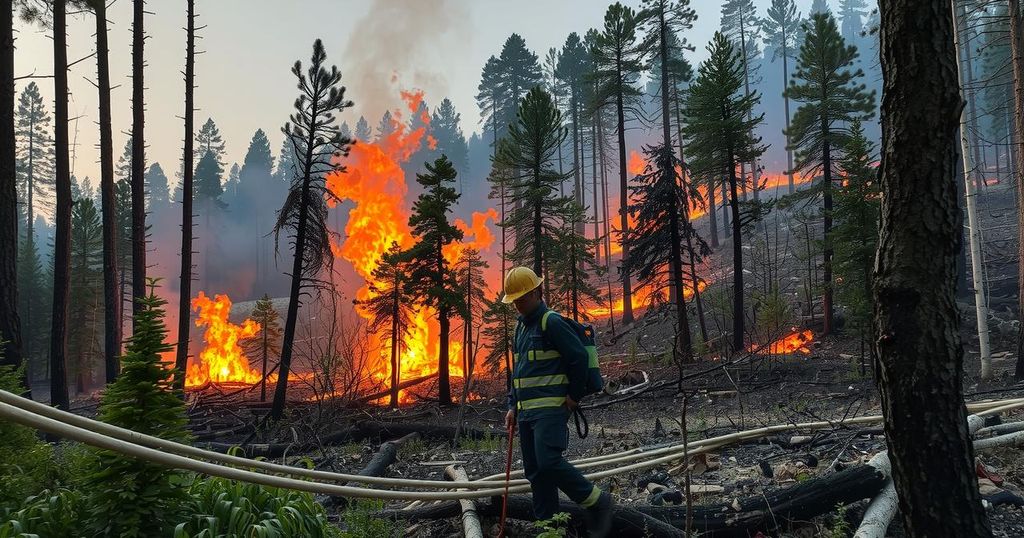Understanding the Complex Causes of Wildfires Beyond Climate Change

Recent analyses show that historical climate cycles, rather than climate change alone, significantly impact wildfire occurrences. Human activities contribute to a major portion of fire ignitions, with studies indicating 75% of recent wildfires in Oregon and Washington being manmade. The evidence emphasizes that proactive forest management and understanding past practices are vital for wildfire prevention.
Recent discussions surrounding wildfires have often linked their increased severity primarily to climate change. However, this argument overlooks historical data indicating that extreme weather conditions favorable to wildfires have been present for thousands of years, driven by natural climate cycles. Evidence reveals that while human activities such as logging, land-clearing for agriculture, and accidental ignitions play a substantial role, climatic conditions are only one element of a more complex equation influencing wildfire frequency and severity.
Statistical analyses from the Western United States, where forest fire records are most comprehensive, demonstrate no clear upward trend in wildfire severity over time. For example, data from 1916 to the mid-1940s show that wildfires on federally protected lands were comparable in scale to major fires seen today. Alarmingly, human actions are responsible for a significant portion of wildfire ignitions, with studies estimating that 75% of wildfires in Oregon and Washington were manmade as of 2021. This trend highlights an alarming reliance on anthropogenic factors rather than solely attributing the issue to climate-induced changes.
For instance, analysis reveals that human-caused wildfires are particularly destructive due to their tendency to ignite on more vulnerable landscapes under extreme weather conditions. Furthermore, allegations suggesting that increased forest pest infestations—claimed to be worsened by climate change—have intensified wildfires neglect to acknowledge the role of poor forestry and fire suppression practices that aggravate pest populations. Historical practices of reduced logging and prolonged fire suppression have effectively established conditions ripe for severe wildfires.
Overall, while climate change undoubtedly exerts some influence, the evidence points firmly to human actions and historical land management practices as primary contributors to recent wildfire challenges. Understanding this complexity is vital in developing effective strategies for wildfire prevention and management moving forward.
Wildfires have frequently been associated with climate change, particularly due to the increasing incidence of extreme weather events. However, the connection between climate change and wildfires is nuanced. Studies show that natural climate variability has historically influenced wildfire patterns. Additionally, the impact of human activity—including changes in land management practices and increased ignitions from various sources—has significantly altered wildfire dynamics. Understanding these factors is essential for developing effective mitigation strategies.
In summary, while climate change has implications for wildfire occurrences, it cannot be solely blamed for recent destructive fires. Historical data indicates that human factors have played a predominant role in initiating wildfires, underscoring the need for improved land management and fire prevention strategies. An awareness of the multifaceted causes of wildfires, including extensive human influence, is crucial in addressing the challenges posed by wildfires today. Thus, fostering a comprehensive approach will aid in developing more effective solutions for the future.
Original Source: www.dailysignal.com






